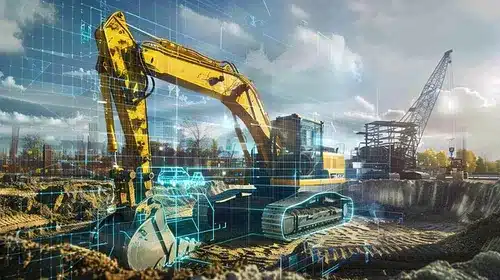AI in architecture and construction is no longer a futuristic idea—it’s becoming a practical solution for solving real-world challenges in the building industry. In 2025, artificial intelligence is playing a major role in helping professionals design smarter buildings, optimize construction processes, and create more sustainable cities.
This article explores how AI is transforming architecture and construction, with practical tools, African examples, and a look at what lies ahead for the future of building.
Generative Design in Modern Architecture
One of the biggest breakthroughs in AI in architecture is the use of generative design. Instead of manually creating a few design options, architects input building requirements such as space size, material preferences, climate data, and regulations. The AI then generates dozens or even hundreds of optimized layouts to choose from.
This approach helps reduce design time, improve space usage, and cut down on human error. Major architecture firms like Zaha Hadid Architects and BIG are already using generative design to streamline complex projects.
Creating Sustainable Buildings with AI
Sustainability is at the center of modern construction. AI helps architects and engineers design green buildings by simulating how a structure will perform in different environmental conditions. It can analyze daylight exposure, airflow, water use, and carbon emissions before construction begins.
AI tools can recommend locally sourced, eco-friendly materials and help reduce waste on-site. In countries like Kenya, integrating AI with solar energy planning could greatly improve access to affordable, off-grid homes that are both smart and sustainable.
Smarter Construction Management
On construction sites, AI improves productivity and safety by tracking project progress and predicting potential issues. AI-powered drones and cameras can scan job sites, compare progress with blueprints, and alert managers to errors or delays.
AI also helps with predictive scheduling and supply chain planning. This ensures that the right materials arrive at the right time, avoiding costly project delays.
Software like Buildots, OpenSpace, and Procore use AI to generate real-time reports, analyze construction workflows, and detect early signs of risk.
Integrating AI with BIM for Better Results
Building Information Modeling (BIM) has already revolutionized design and collaboration. When enhanced with AI, BIM becomes even more powerful.
AI can automatically detect design conflicts in 3D models, suggest cost-effective solutions, and improve coordination between architects, engineers, and contractors. For example, some construction firms in the UAE have used AI-enhanced BIM to reduce rework by over 80 percent, saving time and money.
AI in Urban Planning and Smart Cities
AI is also being used on a larger scale in city planning. Urban planners use AI to simulate traffic flow, forecast housing demand, and balance infrastructure needs such as water, electricity, and transportation.
Smart city projects in Nairobi and Cape Town are exploring AI-driven tools for efficient zoning, energy management, and waste reduction. These tools help governments build more liveable and environmentally friendly urban spaces.
Barriers to AI Adoption in African Construction
Despite the benefits, AI adoption in architecture and construction in Africa still faces challenges. These include the high cost of AI software, limited access to reliable internet in rural areas, and a shortage of AI-trained professionals.
However, the growth of cloud-based tools and AI education programs across the continent is helping to reduce these barriers. Local universities are beginning to offer AI-related courses, and startups are developing affordable, locally adapted AI solutions for the construction industry.
Looking Ahead: The Future of AI in Building
The next wave of AI in architecture and construction includes robotics, 3D printing, augmented reality (AR), and digital twins. AI-powered robots can handle repetitive tasks like bricklaying and painting, while 3D printing technology allows for faster construction of housing units with minimal waste.
Digital twins, which are virtual replicas of physical buildings, allow engineers to monitor energy use, detect faults, and maintain structures remotely. Combined with AI, these technologies will offer more control and efficiency throughout a building’s lifecycle.
Conclusion
AI in architecture and construction is no longer a concept of the future—it is actively shaping how we design, build, and manage buildings today. By embracing AI, professionals in Africa and around the world can reduce costs, improve sustainability, and unlock new levels of creativity.
As tools become more accessible and knowledge spreads, the impact of AI will continue to grow—making the industry more intelligent, efficient, and resilient.
Read also Top 10 Largest Construction Companies in Europe 2025
